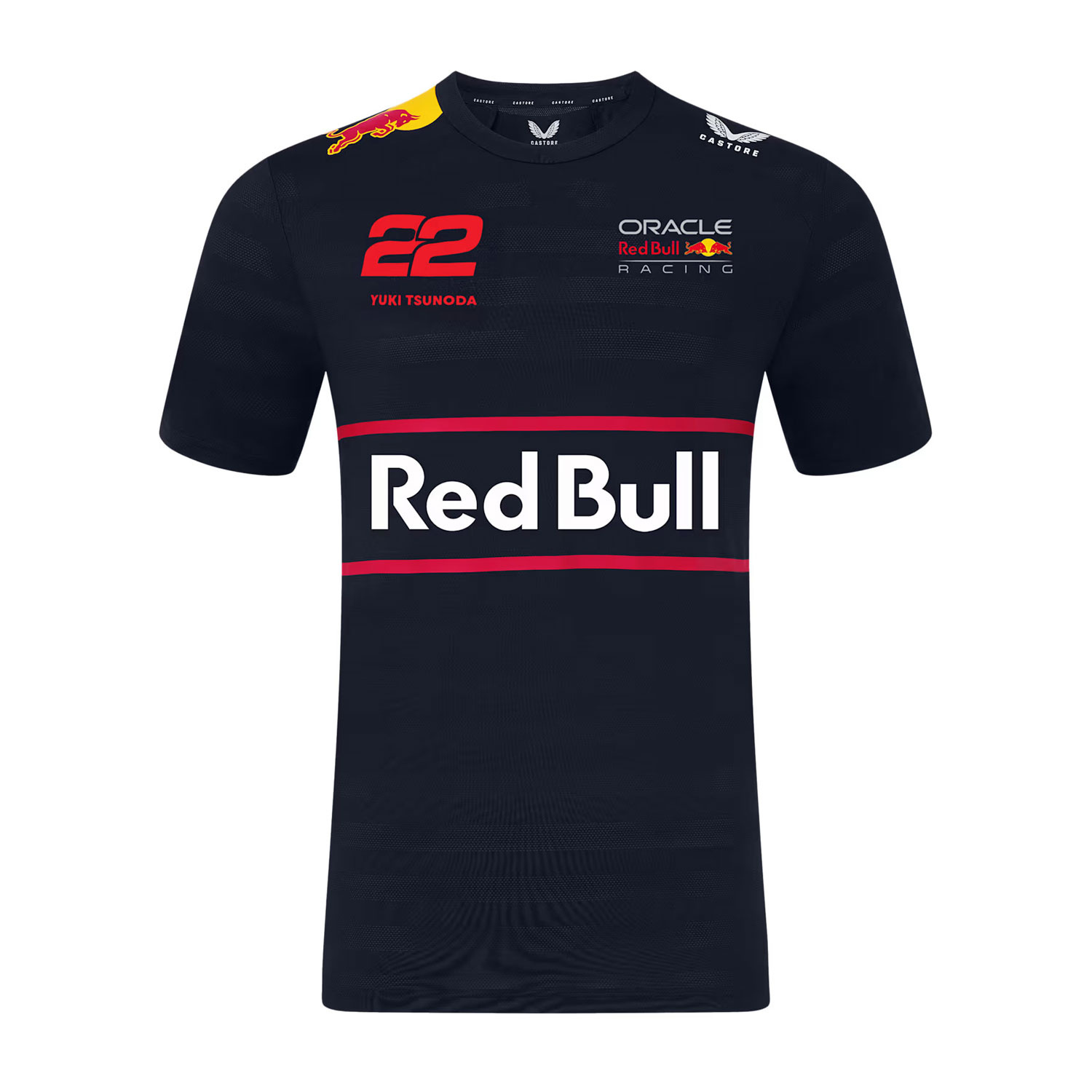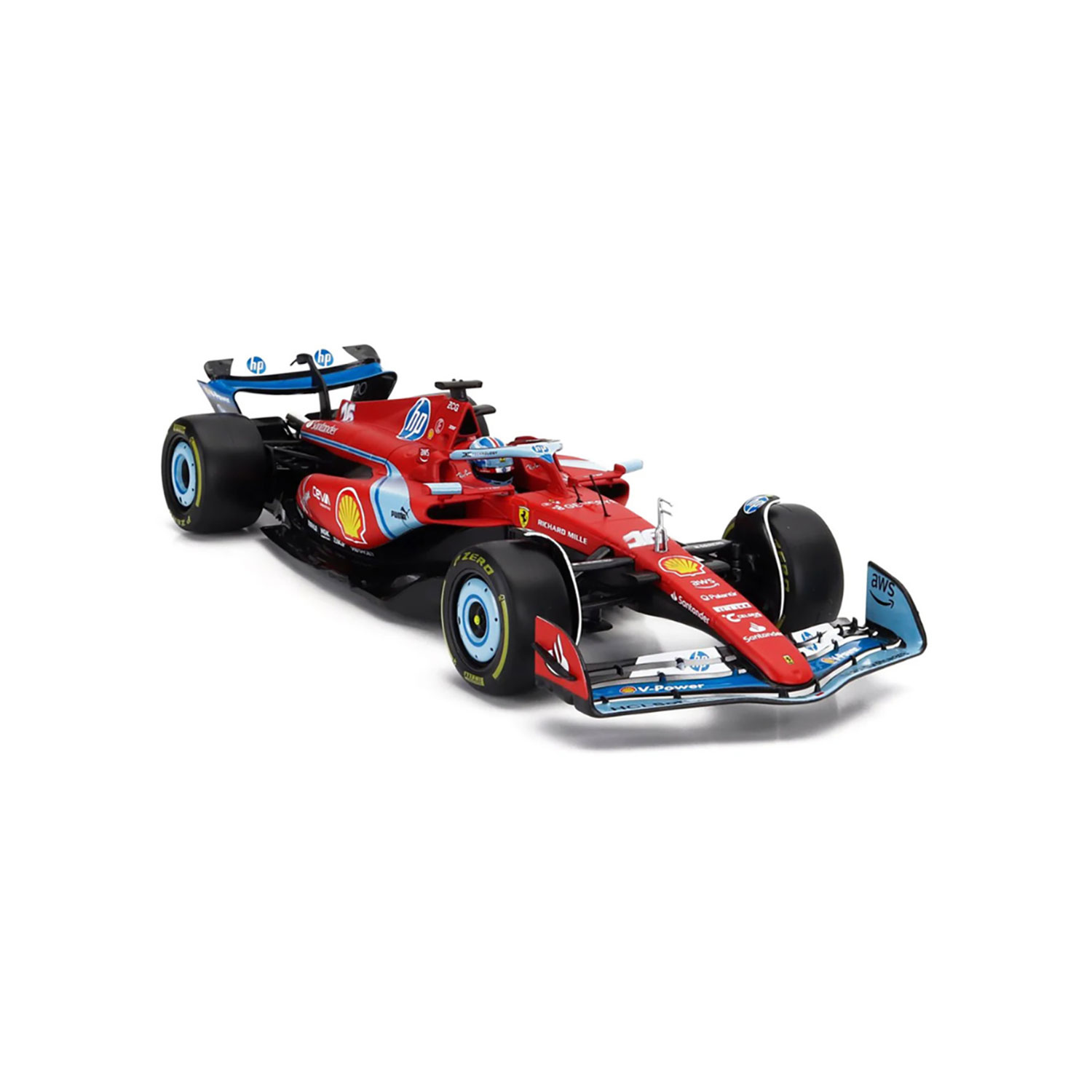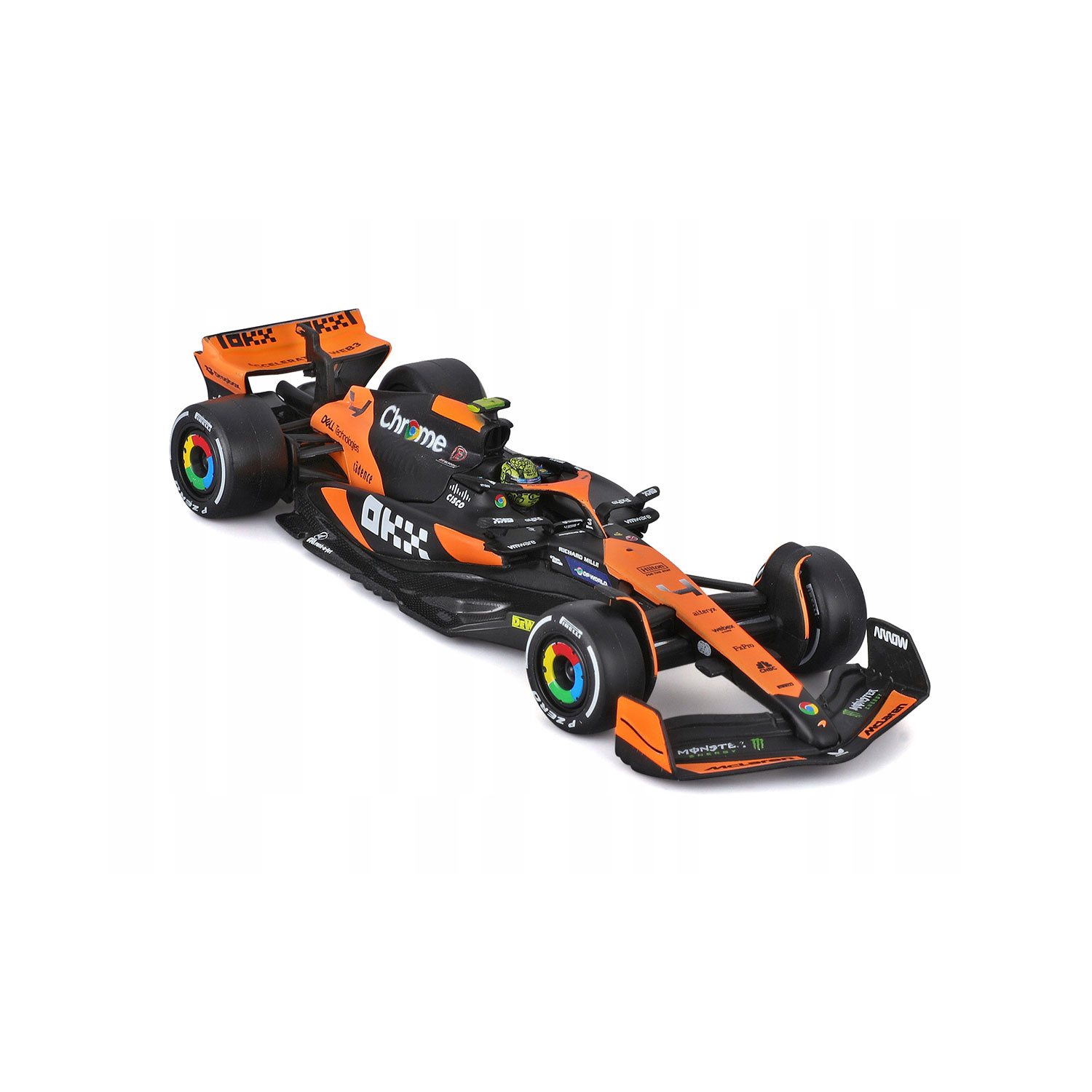How Many F1 Drivers Are There?
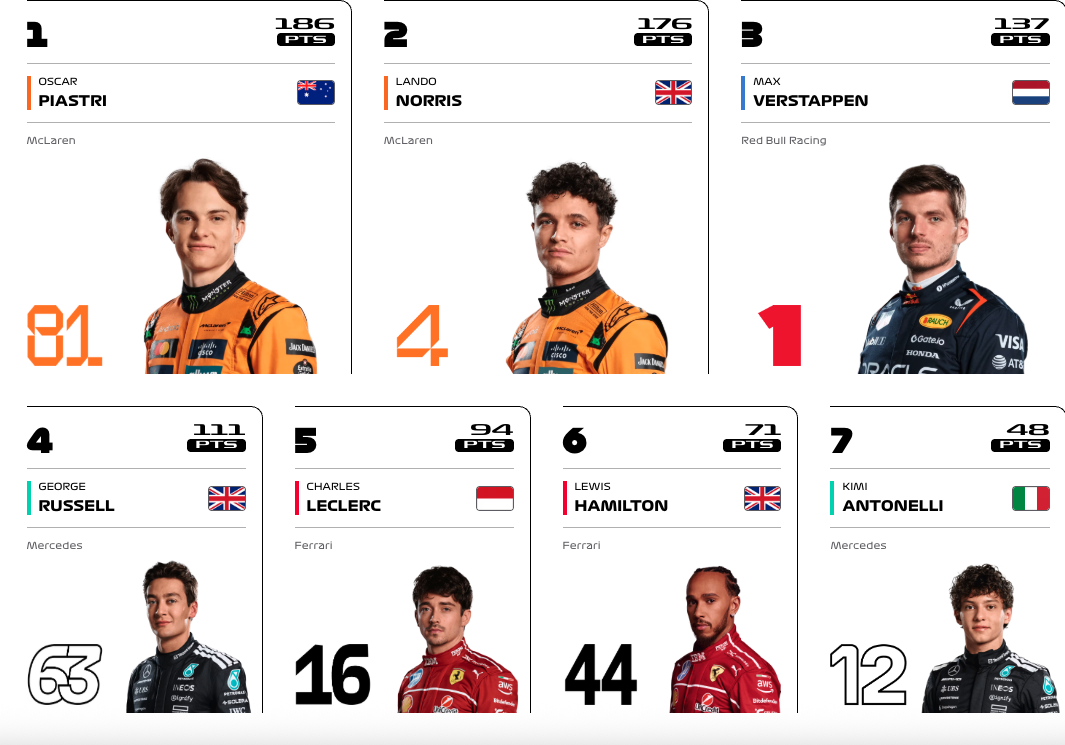
The roar of engines, the precision of pit stops, and the thrill of wheel-to-wheel racing — Formula 1 delivers it all and captivates millions worldwide. But behind every spectacular Grand Prix is a carefully structured grid of elite drivers who've earned their place among motorsport's most exclusive club.
The 2025 Formula 1 grid features 20 drivers representing 10 teams, each bringing their unique skills and ambitions to the championship fight.
Continue reading to explore the complete structure of modern Formula 1, from grid composition to the competitive forces shaping the 2025 season.
The Complete 2025 F1 Grid Structure
Formula 1 maintains a consistent structure with 10 teams, each fielding two cars. It results in a standard grid of 20 drivers that has defined the sport for years. Such a configuration ensures balanced competition while maintaining the exclusivity that makes F1 the pinnacle of motorsport.
The 2025 Formula 1 season showcases this structure perfectly, with each Formula 1 team carefully selecting their driver pairing to maximize championship potential. From championship-winning veterans to promising rookies transitioning from Formula 2, the current drivers represent a diverse range of backgrounds and racing philosophies.
F1 merchandise and collectibles celebrating these drivers have become increasingly popular among fans. Team-specific gear allows supporters to show their allegiance.
The 10 teams competing in 2025 include powerhouses such as Red Bull, Ferrari, and Mercedes, alongside ambitious midfield contenders vying for podium finishes.
The 2025 season features several new driver numbers, reflecting the dynamic nature of the sport where experienced drivers and fresh talent constantly compete for coveted seats. It creates compelling storylines throughout the Formula 1 season.
Championship Dynamics and Team Strategies
The world championship structure shapes how many F1 drivers participate each season. With each team investing millions in development, the selection of drivers becomes crucial for both constructors' and drivers' championship success.
Max Verstappen remains the driving force behind Red Bull Racing, securing his place as the third most successful driver on Formula 1's all-time win list with an impressive 65 Grand Prix victories.1 His dominance has been evident over the past four seasons, where he clinched four consecutive championship titles, breaking multiple records along the way.
Meanwhile, Lewis Hamilton's move to Ferrari is one of the most significant driver transfers in recent F1 history. His teammate, Charles Leclerc, is hoping for a championship-winning season as well.
Other top contenders include Lando Norris and Oscar Piastri. McLaren drivers are on the rise, fighting for the top spot in the 2025 Driver's Standings.
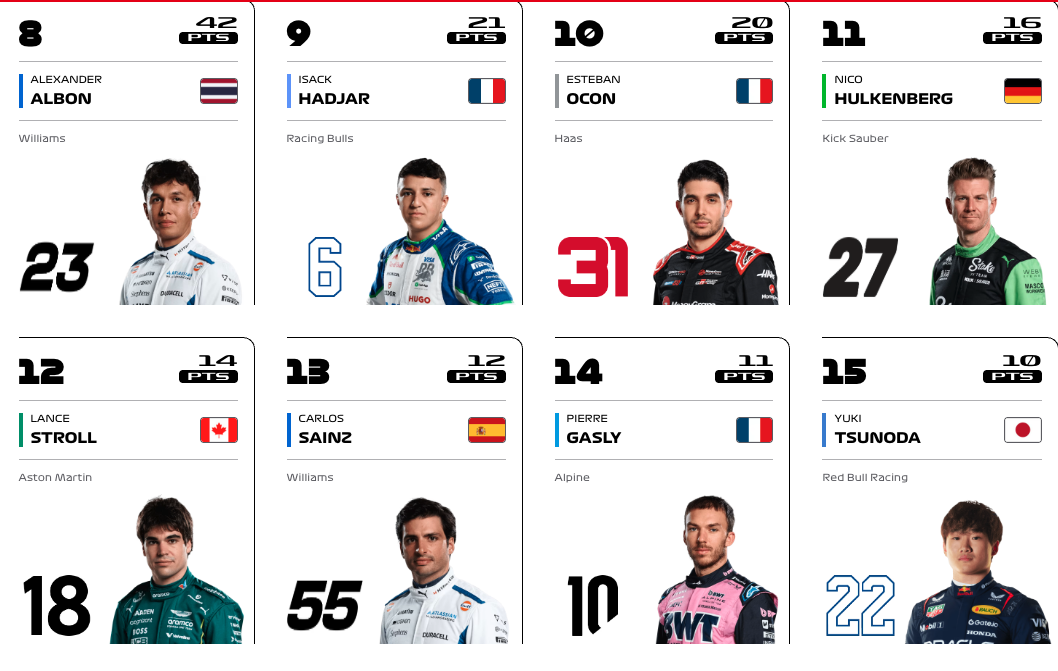
The championship battle extends to teams. Ferrari's driver lineup aims to challenge for race wins, while Mercedes focuses on regaining their championship-winning form. Still, McLaren seems to be the team to beat this season.
Each Formula 1 team must strike a balance between experience and potential, which creates fascinating contrasts across the grid.
F1 racing memorabilia from championship-winning seasons becomes increasingly valuable, reflecting the lasting impact of successful driver-team partnerships. The Spanish Grand Prix, Italian Grand Prix, and Dutch Grand Prix each showcase different aspects of these competitive relationships.
From Grid to Glory: The Path to F1
The journey from aspiring racer to F1 driver is one of motorsport's most challenging progressions. Most of the current drivers progressed through Formula 2 and other junior categories before earning their opportunity in single-seater formula racing cars.
The 2025 Formula 1 grid features six rookie drivers, making it the largest influx of new talent in over a decade.2 The rookies make up 30% of the lineup, highlighting the sport's commitment to nurturing new talent.
These drivers compete alongside established champions like Fernando Alonso, creating intergenerational battles that define modern F1.
The pole position battles and podium fights throughout each Grand Prix weekend demonstrate the incredible skill level required to succeed. From the season opener to the final world championship race, every session demands peak performance from all 20 drivers.
F1 simulators and gaming equipment have become essential tools for driver development, allowing both professionals and sport enthusiasts to experience the precision required for success in Formula 1.
Team Dynamics and Grid Competition
The competitive balance among F1 teams creates fascinating dynamics that influence driver performance throughout the season. With drivers accumulating points across multiple Grand Prix weekends, consistency becomes as important as outright pace.
Teams and drivers must navigate various challenges, from the F1 calendar's demanding schedule to the pressure of six F1 sprint events that add extra complexity to race weekends. The Formula 1 Grand Prix format tests every aspect of driver skill, from racecraft to strategic thinking.
Historical context adds depth to current competitions. Legends like Michael Schumacher and Juan Manuel Fangio set standards that today's drivers strive to match, while modern champions like Lewis Hamilton continue building their legacies.
F1 collectibles and vintage racing gear celebrate this rich history, connecting current fans with the sport's legendary past. At the same time, the evolution from purpose-built circuits to modern facilities reflects the continuous development of F1.
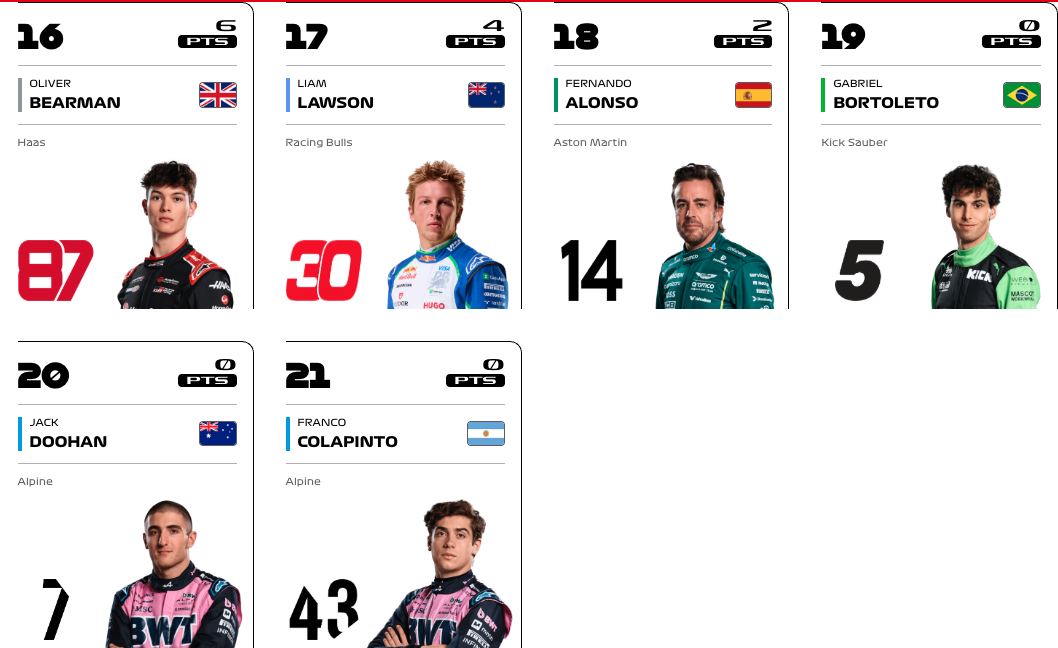
Current Drivers and Future Prospects
The 2025 season has already seen significant changes, with teams making strategic decisions about their driver lineups based on performance and potential. The official F1 grid represents the culmination of years of development for each competitor.
Driver development continues beyond their F1 debut, with experienced drivers mentoring newcomers while competing for the same opportunities. The F1 World Championship rewards both individual brilliance and team collaboration, creating unique pressures that shape the careers of drivers.
The slowest five drivers in qualifying still represent the pinnacle of racing talent, demonstrating the incredible depth of skill required to compete at the F1 level.
F1 technical equipment and performance gear used by teams provide insights into the technological aspects that support driver performance. The relationship between driver skill and technical innovation continues to define Formula 1's evolution.
| Category | Current Drivers | Future Prospects |
|---|---|---|
| Experience | Veterans like Lewis Hamilton, Fernando Alonso, and Max Verstappen bring years of expertise to the grid. | Young talents such as Oliver Bearman and Andrea Kimi Antonelli show promise for future dominance. |
| Teams & Stability | Established teams like Red Bull, Ferrari, and Mercedes have retained strong driver lineups. | Driver transfers and new talents entering the sport could shift the competitive landscape. The addition of Audi in 2026 is especially exciting. |
| Technology & Performance | Current drivers benefit from advanced hybrid engine technology and aerodynamics. | Future advancements in sustainable fuels and electric power integration could redefine racing strategies. The 2026 season will be revolutionary in this aspect, with changes to power unit configurations and size of the racecars. |
Conclusion
The answer to "how many F1 drivers are there?" encompasses more than just the number 20. It represents a carefully curated group of the world's best racing talent, each bringing unique skills to the championship fight. The 2025 Formula 1 season showcases this talent through intense competition across every Grand Prix weekend.
Understanding the grid structure, team dynamics, and competitive pressures provides a deeper appreciation for the skill level required to succeed in Formula 1. Whether you're tracking championship standings, collecting memorabilia from teams like McLaren or Aston Martin, or simply enjoying the spectacle of each race, the human element remains central to Formula 1's enduring appeal.
The Formula One world continues evolving, but the fundamental truth remains: these 20 drivers represent the absolute pinnacle of motorsport talent, each contributing to the sport's rich tapestry of competition, innovation, and human achievement.
References
1. The Race. (2025, June 1). How many race wins does each 2025 F1 driver have? Retrieved from https://www.the-race.com/formula-1/how-many-race-wins-f1-drivers-have/
2. Motor Sport Magazine. (2025, January 21). The 2025 F1 rookies: How six wunderkinds became grand prix drivers. Retrieved from https://www.motorsportmagazine.com/articles/single-seaters/f1/the-2025-f1-rookies-how-six-wunderkinds-became-grand-prix-drivers/
3. Formula 1. (2025). F1 Drivers 2025. Retrieved from https://www.formula1.com/en/drivers

